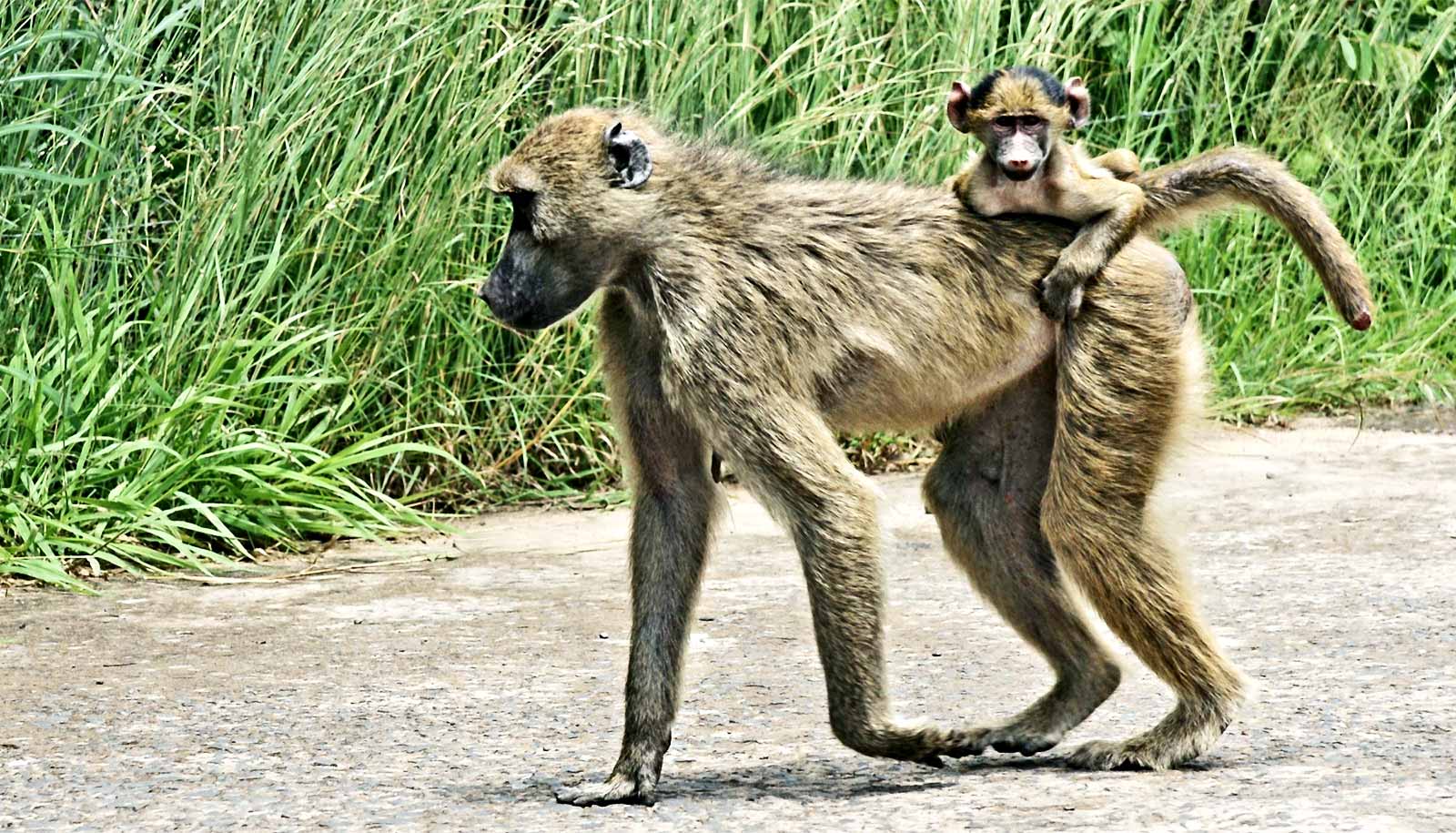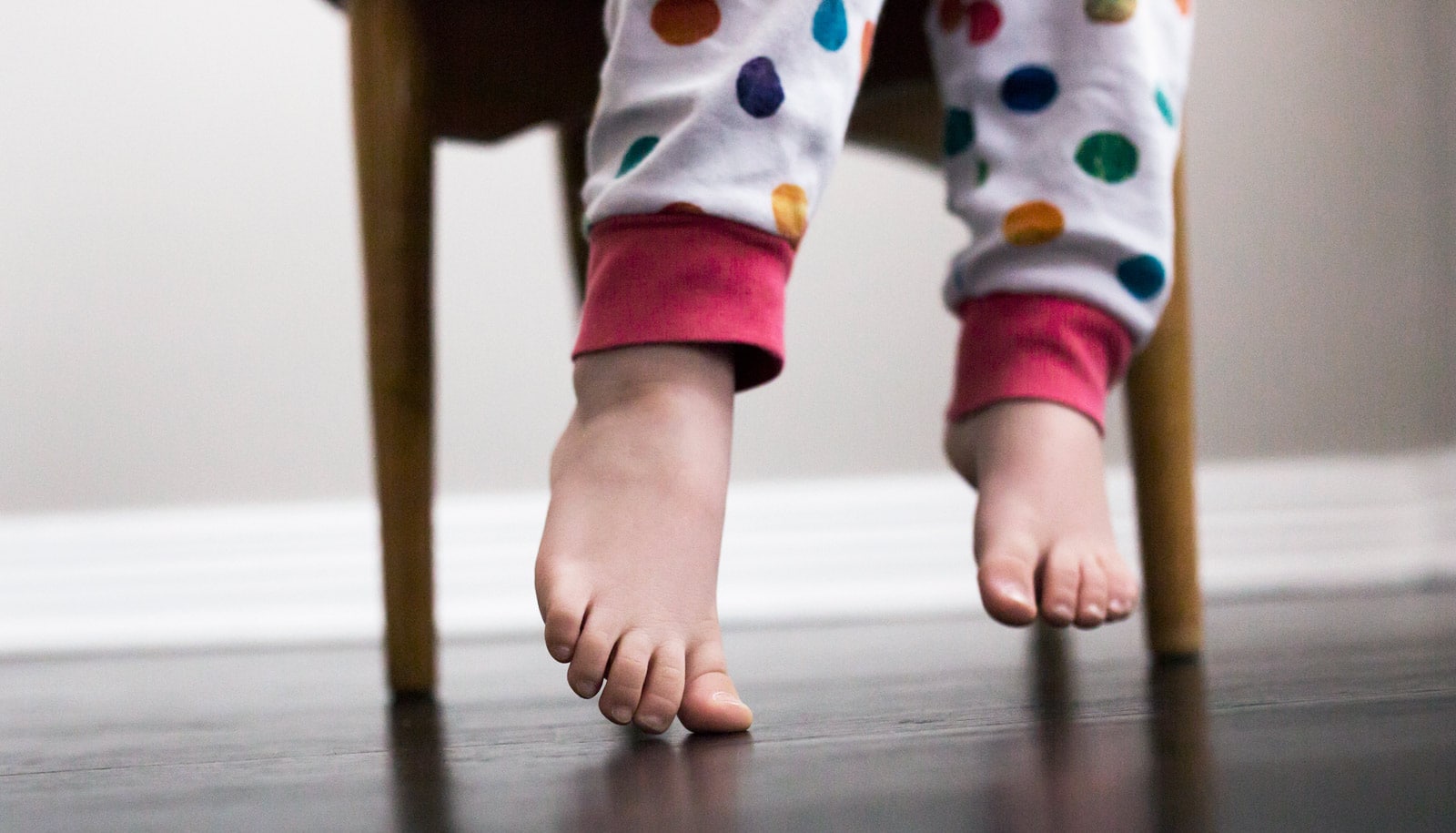For baboons, the impact of early adversity doesn’t just fall on one generation—the next generation bears the brunt as well, according to new research.
Researchers monitored 169 baboon mothers and nearly 700 of their offspring almost daily between 1976 and 2017 in Amboseli National Park in Kenya. They found that a baboon mother’s early trauma links to shorter lifespans for her kids, even if they grew up more carefree than she did.
Numerous studies show that children who had a rough start in life are more likely to have health problems later on. The study indicates that enduring effects of early adversity aren’t unique to humans. While baboons don’t risk growing up poor, or with an alcoholic parent, or in high-crime neighborhoods, some have it harder than others.
The team looked at a variety of bad breaks a baboon might face in the first four years of life, before they start reproducing. They might be orphans, or born in lean times with scarce food and water. Some have a mom with low social ranking. Others may have to compete for their mother’s milk and attention with a younger sibling close in age or the larger group.
For young baboons, ‘mom is everything’
A previous study from 2016 showed that baboons that experienced multiple such misfortunes during childhood die up to 10 years earlier than their more fortunate peers.
The new study shows the effects of early adversity shows up years later in the next generation, even when those offspring had it easier than their mothers did.
Specifically, female baboons whose next-born sibling arrived before they were fully weaned, or became orphans before age four, went on to have offspring that were 39% to 48% less likely to make it to adulthood themselves—often seven or more years after their moms’ early hardships.
“It’s a big difference,” Alberts says.
Take Waka. By the time Waka was just 16 months old, her mother Willy was already juggling another baby. Then, just before Waka turned three, her mother died. Waka eventually had four children of her own, but none of them survived past their fifth birthday.
The study does not pinpoint why offspring of “survivor” females have a higher risk for early death. It could be that when a baboon’s relationship with her mother is cut short, she is less able to provide basic care when she becomes a mother herself, such as making quality milk, protecting her kids, or teaching them how to forage or make friends.
“Up until the age of four months, baboon kids rarely venture more than a meter from their mother,” says Alberts, who has been studying the Amboseli baboons since 1984.
“In the first year of life, a baboon’s mom is everything,” says Matthew Zipple, a PhD student in biology and lead author of the paper, published in eLife.
Breaking the cycle
The team’s next step is to look at how a mother’s history of hardship affects her parenting. To find out, the researchers have been observing mother-infant pairs for 45 minutes at a time, noting all the ways the mothers interact with their infants, from cuddling or suckling them to attending to their infants’ cries.
Using baboons to understand the origins of disease makes it possible to disentangle the intergenerational effects of early adversity from other factors that often confound studies of human health, such as education, drug use, and access to health care.
The researchers say their baboon research is important because it helps them test ideas about how childhood wounds one generation faces can take a toll on the next, and how close relationships with parents or other sources of support can help break the cycle.
By tracing adult health problems back to traumas faced in a parent’s or grandparent’s childhood, scientists say, we may better understand how to prevent some family disease trends from taking root in the first place.
Additional coauthors are from Duke, Notre Dame University, and Princeton University.
Support came from the National Institute on Aging, the Leakey Foundation, the National Science Foundation, and the Eunice Kennedy Shriver National Institute of Child Health and Human Development.
Source: Duke University

